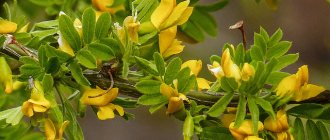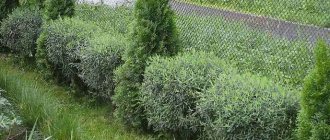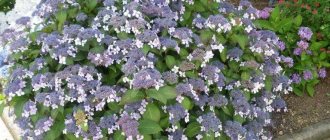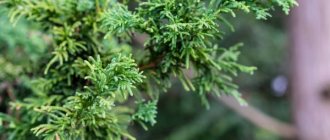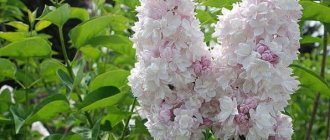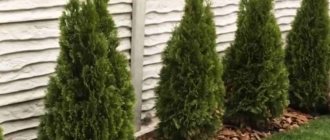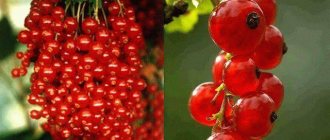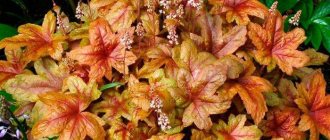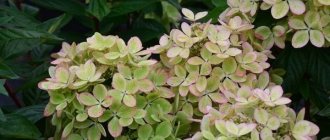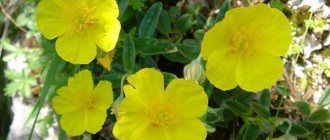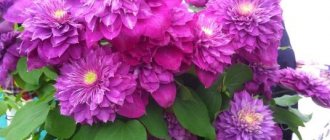Description of Serbian spruce
Spruce Serbian omorica is endemic to the valley of the middle Drina, growing on the steep northern slopes of Mount Tara at an altitude of 800 to 1600 m. The habitat covers an area of about 60 hectares and is located in the east of Bosnia and in the western part of Serbia. The culture was discovered and described by botanist Joseph Pancic in 1875.
Serbian spruce (Picea omorika) is a coniferous plant from the genus Spruce of the Pine family. It reaches a height of up to 30 m, a width of 2.5-4 m, and forms a slender tree with a crown in the form of a narrow cone or a column slightly widening at the bottom. Trunk diameter – up to 1.5 m.
The branches are quite sparse, short, slightly arched, with raised ends. Young shoots are brown and pubescent; mature shoots are covered with thin reddish-gray scaly bark.
The color of the needles does not change depending on the season. The length of the needles is from 8 to 18 mm, the width is 2 mm. The underside of the needles is lined with two light stripes, and on the top there is a dark green shiny path. The needles of the Serbian spruce are prickly, but not as prickly as those of other species.
The crop blooms in May. Male cones are red, female cones are first colored red-lilac-brown, then become brown and shiny. Ripen by August next year. Cones can appear already on a 12-15 year old tree, have an ovoid-oblong shape, 3-6 in length, rounded, slightly toothed scales. They hang from the ends of branches and look very attractive. The seeds are 2-3 mm long and have a transparent wing 5-8 mm long.
Serbian spruce trees are better adapted to urban conditions than others; they tolerate gas and smoke pollution well. Shade-tolerant, relatively undemanding to soil. Tolerates low temperatures well. In nature they live up to 300 years.
Varieties and types of Serbian spruce
In Europe and Russia, Serbian spruce grows better and requires less care than the more decorative species from North America - Prickly and Canadian. Many different varieties have been created with different crown shapes, heights and some variety in the color of the needles.
Spruce Serbian Aurea
A special feature of the Serbian spruce Aurea is its golden needles. But only young needles have this color; by the middle of the season they begin to turn pale, and by the end they acquire the usual gray-green color.
The Aurea variety reaches 1.5-3 m by the age of 10, and stretches to 10-12 m at 30 (in Russia - approximately 9 m). The crown diameter of the Serbian spruce at this age is 5 m. The annual growth is 15-30 cm, according to some data – more.
Short needles up to 2 cm long are semi-rigid. Old needles have dark green upper parts and silver lower parts. The branches grow close to each other, forming a dense cone. A tall mature tree becomes looser.
Serbian spruce Aurea should be planted in the sun, then the needles retain their golden color longer and the branches grow densely. If you place it in partial shade, the yellow color will become pale and the crown will become sparse. Without access to light, Aurea loses its original color.
This variety tolerates polluted air well and winters in zone 4 without shelter.
Serbian spruce Zuckerhut
The name of the variety is translated into Russian as sugar loaf. Indeed, the Serbian spruce Zuckerhut has a conical crown of regular shape and is classified as a dwarf. On sale since 1999, and is still rare.
By the age of 10 years, the Zuckerhut spruce reaches a length of up to 1.5 m with a width of 80 cm. An adult tree after 30 years grows to 2-2.5 m, the crown diameter is about 1.5 m. These are the maximum dimensions; in Russia, Serbian spruce is unlikely will reach them. The annual growth is no more than 15 cm.
The shoots of the Zuckerhut variety are tough, short, mostly directed upward, and densely covered with needles. At a young age, the crown is somewhat rounded, then it acquires more strict shapes. The branches of an adult tree do not become sparse.
The needles of Serbian spruce are blue below, green above, slightly twisted. This creates an interesting effect. The branches of the Zuckerhut variety are raised up, and the green color seems to be mixed with silver.
The tree can grow in partial shade or in an open place; it requires protection from the sun in late February and early spring. Without shelter it winters in the fourth zone.
Serbian spruce Pimoko
The Serbian spruce variety Pimoko, obtained from the witch's broom mutation, was discovered in the early 80s of the 20th century. He is very similar to the well-known Nana, but much smaller in size. The crown is spherical or nest-shaped, by the age of 10 it reaches a height of 30 cm. The annual growth is uneven, no more than 7 cm. The diameter of the crown of the Serbian Pimoko spruce after 30 years does not exceed one and a half meters, but in Russia it will not reach that size.
The branches are short, hard, and reddish. They are pressed against each other, do not allow sun and moisture to pass through well, and require regular cleaning. But the Pimoko crown is dense not due to the larger number of shoots, but because of the shortened internodes.
The needles are small, dark green above, silver-blue below. The needles stick out in all directions, giving the impression that Pimoko is unevenly colored.
Resistance to air pollution is high. Serbian spruce Pimoko overwinters without protection in the 4th frost resistance zone. Can be grown on a trunk.
Spruce Serbian Vodan
The result of artificial crossing of the Serbian Spruce with the North American Brewera Spruce was the dwarf hybrid Wodan. It was created at the beginning of the century in the nursery of Verdun, Germany. The name is given in honor of the supreme god Wodan (Wotan), who is the German analogue of the Scandinavian Odin, more famous in Russia.
Up to 10 years, the variety grows very slowly, annually adds about 5-8 cm, and reaches a height of 60-70 cm with a width at the bottom of up to 50 cm. Then the tree begins to grow at a rapid pace - 15-20 cm each. Dimensions of the Serbian Votan spruce after 30 years is unknown, since the variety is young.
The crown is pyramidal, not too dense. The needles are greenish-blue and short. Resistance to urban conditions is satisfactory. Frost resistance – zone 4, some sources claim that the variety overwinters at -40° C.
Spruce Serbian Linda
This variety is more popular in Europe. It is difficult to find in Russia. Most lovers who collect a collection of conifers, or who for some reason want to get this particular variety, order Linda from abroad.
Those who love standard spruce trees consider this variety to be one of the most beautiful. Linda's crown is pyramidal, the branches bend serpentinely, but not so much as to call the tree bizarre, the lower ones, without pruning, lie like a skirt on the ground. Height at 10 years is about 1.5 m, growth is 15 cm per year.
Linda's needles are bluish below, dark green on the top. Due to the fact that the shoots “flow”, the visual effect is impressive - the coloring is uneven and invariably draws attention to the tree.
Serbian spruce Medusa
Perhaps Medusa is the most exotic variety of Serbian spruce. It’s hard to call him beautiful, rather the word strange would be more appropriate here. Medusa is rare even in Europe. Russian exotic lovers are forced to order varieties from foreign nurseries.
The height of an adult plant is about 3 m. The branches are arranged irregularly and stick out in different directions. They are quite long, snake-like, bending and twisting. Moreover, there are few branches, as well as side shoots! The effect is stunning.
Important! Fans of standard conifers are unlikely to like this Serbian spruce.
The needles are tightly pressed to the shoots, blue-green. Young needles are bluish, lighter.
Spruce Serbian Karel
Popular and widespread variety. It is a dwarf evergreen tree by the age of 10, growing up to 60 cm with a width the same or slightly larger. Young needles are light green, becoming blue-green by the end of the season.
The crown is cushion-shaped or similar to a hemisphere. It holds its shape well and can do without formative pruning. Without shelter it winters in zone 4.
Comment! If cared for well, the Serbian spruce Karel feels quite comfortable in a pot.
Serbian spruce Nana
One of the most famous varieties. By the age of 10, Nana has a height of 1.5 m, and at 30 she stretches up to 4-5 m. In Russia, the size is more modest. The annual growth in height is 5-15 cm, the width increases by 5 cm.
The young Serbian spruce Nana has a dense, rounded-ovoid crown, the leader is weakly expressed. An adult tree is looser and the shape becomes conical. The needles are blue-green, sparse.
Serbian spruce Pendula
Many experts believe that Pendula is not a separate variety, but a collective name for Serbian spruce trees with a drooping crown. All of them reproduce only by grafting and do not have a trunk. Its function is performed by a strong branch, chosen at random and tied to a support.
It is by the nature of the growth of the central conductor that varieties are distinguished. For example, the description of the Serbian Bruns spruce shows that the tree first stretches upward and then begins to bend. And the Cook variety tends to take a horizontal position just above the grafting site.
Unlike other types of Pendula spruces, Serbian spruces do not require a rigid garter. Their branches are strong and quickly become lignified. The center conductor bends but does not lie on the ground. The shoots descend close to the trunk and form an impenetrable curtain. The needles are blue-green.
Annual growth depends on the variety, on average it is 15-20 cm per year. The height is determined by whether the tree is tied and how far the loose center conductor bends. It is more convenient to talk about the length of the leader, and after 30 years it can be 10-15 m.
Serbian spruce in landscape design
In Russia, Serbian spruce trees are often used in landscape design. They are more suitable than others for growing in urban environments and require minimal care. The variety of varieties allows the crop to be used in different compositions:
- Serbian spruce Bruns and other Pendulas will be a magnificent vertical accent when rigidly staked, or a fancy tree with a fantastic shape if grown without support;
- dwarf varieties Karel, Pimoko and Vodan can be placed in rock gardens, rock gardens and flower beds;
- Aurea attracts the eye with the unusual golden color of the crown;
- Zuckerhut and Linda can be planted in the stalls, and for the New Year they can be decorated with toys and garlands;
- Jellyfish looks like an alien among conifers, and is suitable for people who want to capture the imagination of others;
- forms with a narrow, arrow-like shape that looks like an arrow pointing into the sky can be planted as an alley or vertical accent in large and small tree groups.
Neighbors of Serbian spruce trees can be any crops that require regular, abundant, but infrequent watering and prefer acidic soil.
Advice! Moisture-loving plants are planted by limiting the area of their nutrition with a border tape (to prevent water from spreading), or in another way.
Photo of Serbian spruce in landscape design
Recommendations for selection
Almost all varieties of Serbian spruce can be used in middle and northern latitudes. For example, most of them are suitable for the Moscow region. In order to grow a beautiful spruce on your site, you need to choose the right seedlings.
The choice of variety is determined by several criteria: tree height, crown width, color of needles and cones, possibility of growing in a given area (no obstacles to the normal growth of seedlings).
You should buy seedlings closer to spring, when it is time to plant. To avoid surprises, you should trust the experts and purchase healthy plants from special nurseries. There, the trees grow in open ground, which has a beneficial effect on the adaptation of seedlings to a new planting site. Nurseries offer two types of seedlings: with open or closed roots.
In the first case, the Christmas tree will have to be planted as quickly as possible so that the root system does not have time to dry out, and when transporting to the planting site, the roots should be moistened.
Planting and caring for Serbian spruce
Caring for Serbian spruce trees is not difficult, but must be done regularly. Any novice gardener can handle it without outside help. If you leave the plant unattended for a long time, it will begin to get sick and lose its decorative effect. In the worst case, the tree will die.
Preparing seedlings and planting area
Serbian spruce is planted in an open sunny place. It withstands partial shade well, but if there is not enough light, the crown becomes loose, and the needles of the Aurea variety turn pale. The soil must be loose, permeable to water and air, acidic or slightly acidic. The species tolerates anthropogenic air pollution well.
If there is a choice, seedlings should be taken from local nurseries. Imported spruce trees must be in a container. You can buy local ones with a burlap-lined earthen lump. Serbian spruce trees with bare roots are unlikely to take root. The needles should be fresh and elastic; even browned tips of the needles are a sign of trouble.
Rules for planting Serbian spruce
The planting pit is prepared at least 2 weeks in advance. It is not necessary to completely change the soil in it:
- for looseness and improvement of structure, leaf humus and turf soil are added to the substrate;
- acidity is brought back to normal using high-moor peat;
- Clay is added to sandstones that are too light.
The root collar should remain at ground level when planting. As the pit is filled, the substrate is compacted so that voids do not form. After planting, the tree is watered abundantly and the soil is mulched.
Watering and fertilizing
Serbian spruce is often watered immediately after planting, about 2-4 weeks. Then the soil is moistened rarely, but abundantly; for each small tree you need at least 10 liters of water. Adults water so that for every linear meter of growth there is a bucket of liquid. In warm weather, sprinkling of the crown is necessary.
Root and foliar feeding is done with special fertilizers for coniferous crops.
Mulching and loosening
The soil under Serbian spruce trees is loosened only in the first 2 years after planting. Then, in order not to injure the roots that are close to the surface, they only mulch. It is better to use acidic peat or pine bark.
Trimming
Serbian spruce trees usually do not require formative pruning, but they tolerate trimming well. Dry and broken branches require regular removal during sanitary measures.
Crown cleaning
For large trees and Serbian spruce trees with a sparse crown, cleaning the crown is quick and unnoticeable among other sanitary measures. Particular attention should be paid to dwarf varieties with a dense crown - without access to light, with poor ventilation, needles and twigs close to the trunk dry quickly, dust collects, and spider mites appear.
Cleaning is carried out annually, and then the plant and the area under it are treated with a fungicide containing copper.
Sun protection
At the end of winter and early spring, the needles quickly evaporate moisture, and the root, located in frozen ground, cannot replenish it. Trees under 10 years of age, dwarf forms and the Aurea variety are especially affected. When the weather is sunny, burlap or white non-woven material should be thrown over the trees until they begin to grow.
Preparing for winter
Most varieties of Serbian spruce winter well without shelter in zone 4. Newly planted trees need to be protected in the first year or two, then limited to mulching.
Growing
Most varieties are suitable for almost any type of garden soil; they cannot be planted in waterlogged areas. In heavy clay soils, it is recommended to add river sand, wood ash or lime before planting.
Landing
Work is carried out in the spring or early September . The holes for seedlings are prepared with a depth and width of 60 cm. For group plantings, 2.5 m is left between plants.
To the soil, which is intended for filling the roots, add 1 part of peat, leaf humus and sand . To accelerate growth, you can apply any complex fertilizer. Seedlings are placed freely, trying not to damage the root system. The root collars should be level with the soil surface. After planting, 5 liters of water are poured under the trunk.
Features of care
Young trees need to be watered throughout the growing season: from April to October . Lack of moisture can cause yellowing of the needles and drying out of fragile roots. One plant needs 10 liters of water, it needs to be watered twice a month. After each moistening, the soil above the roots is loosened to a depth of 4–5 cm. In summer, the crown of the plant can be sprayed with a shallow watering can.
Serbian spruce does not need special feeding . Fertilizers are applied only to poor soil. The best way to maintain soil nutrition is to mulch the tree trunk with peat or humus. Container crops are fed with compounds for conifers once a month before watering.
Trimming
Sanitary treatment of the crown: removal of broken, dried, frozen branches is carried out at any time after damage appears. It is recommended to do a shaping haircut only in winter. During the warm period, injuries caused increase sap flow and can provoke the development of diseases. It is advisable to cut off no more than 3–4 cm of shoot length at a time .
Wintering
Although all varieties of Serbian spruce are resistant to frost, plants younger than 5 years old require additional protection during the cold season. For the winter, the crowns are covered with thin burlap or other breathable material. The layer of tree trunk mulch from sawdust or pine needles is thickened in late autumn; it should be at least 7 cm. During the winter, the tree is regularly covered with snow . It must be carefully shaken off the branches of uncovered plants.
Pests and diseases
The main enemies of the tree are spider mites and aphids . To prevent parasites from damaging the needles, it is advisable to spray the crowns of spruce trees with garlic infusion, a decoction of onion peels, or ordinary soapy water. If insects have already appeared on the branches, use a solution of colloidal sulfur.
Reproduction
Serbian spruce trees reproduce depending on the variety:
- Forms that are close to the species plant and produce cones can be propagated by seeds. To preserve the variety, culling of seedlings that are different from the parent form begins in the first year of life. Typically, the yield of quality plants does not exceed 20-50%. From the moment of emergence of seedlings to transplantation to a permanent place, 4-5 years pass.
- Most Serbian spruce trees can be propagated from cuttings. Experts use them all year round; amateurs are advised to root in the spring. There are a lot of lunges even with professional breeding.
- Weeping forms are bred exclusively by grafting. Amateurs cannot do this operation. Even domestic nurseries are just mastering it and are not able to saturate the market.
How to propagate?
Serbian spruce "Nana" can be propagated in several ways: by grafting onto Norway spruce, by seeds and by cuttings. Plant grafting is possible only in professional nurseries. Seed propagation will also be difficult.
Seed material is obtained from cones. The difficulty lies in the fact that sprouted spruce trees do not always inherit the characteristics of the variety, and therefore some of them need to be discarded in the second year of cultivation. In addition, during the growing process, trees will have to be frequently transplanted from place to place, which can be very difficult for some gardeners.
The best option for propagation at home is cuttings. This method is also quite labor-intensive and time-consuming. It is better to cut shoots in spring. The lower needles are removed and the cuttings are planted in a sandy substrate using growth stimulants.
Spruce is germinated in a shaded place, providing a high level of soil and air humidity. Rooting should occur within 3 months, after which the cuttings are transplanted into more enriched soil in a plastic container, at the bottom of which holes must be made to drain excess moisture. Transplantation into open ground can be carried out after shoots appear on the cuttings.
You will learn how to plant a spruce correctly in the next video.
Diseases and pests
Serbian spruce has good health and is rarely affected by pests. But only if the tree is regularly looked after, watered on time, fed and preventative treatments are carried out.
The crop is often affected in the absence of sprinkling of the crown by spider mites. If needles are moistened late in the evening and they do not have time to dry, mealybugs may appear in warm climates. Other pests are introduced from infected plants. During the years of epizootics (mass reproduction of one or another insect), all crops suffer.
Among the diseases, special mention should be made of rot that occurs during overwatering, especially on dense soils, and shutte, which mostly affects branches lying on the ground. The infection can be spread from tree to tree with dirty hands.
Diseases are fought with fungicides, pests are destroyed with insecticides.
